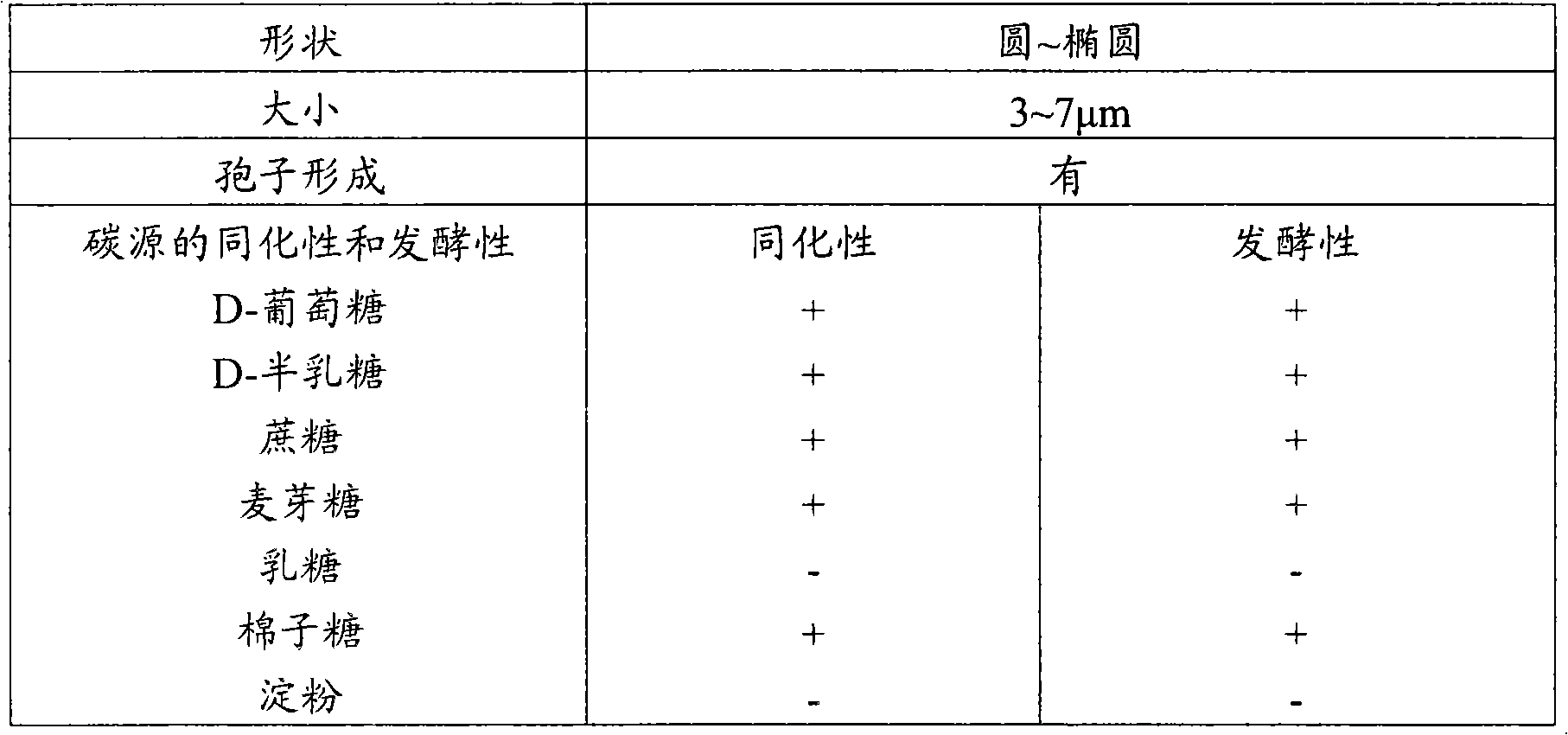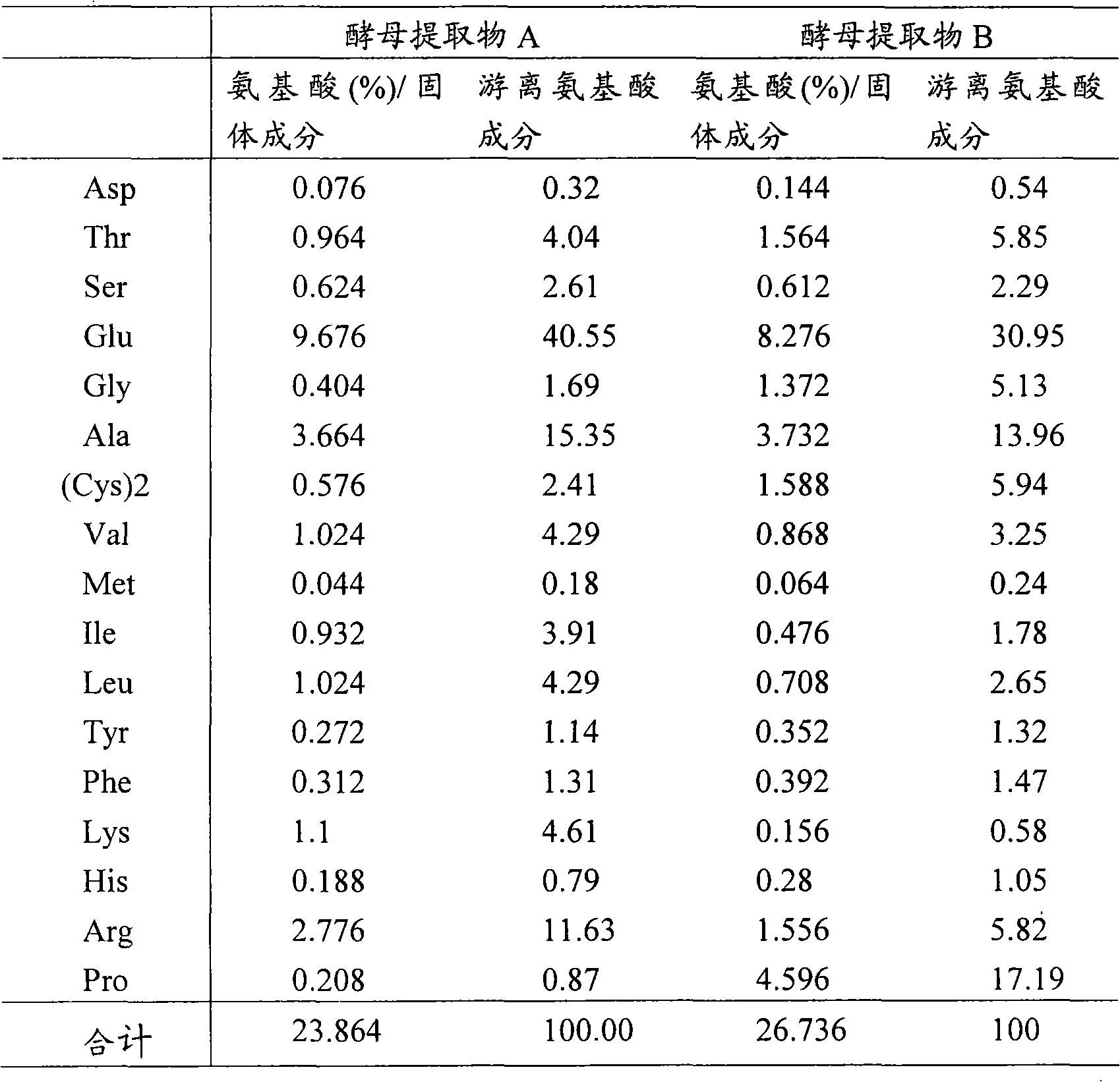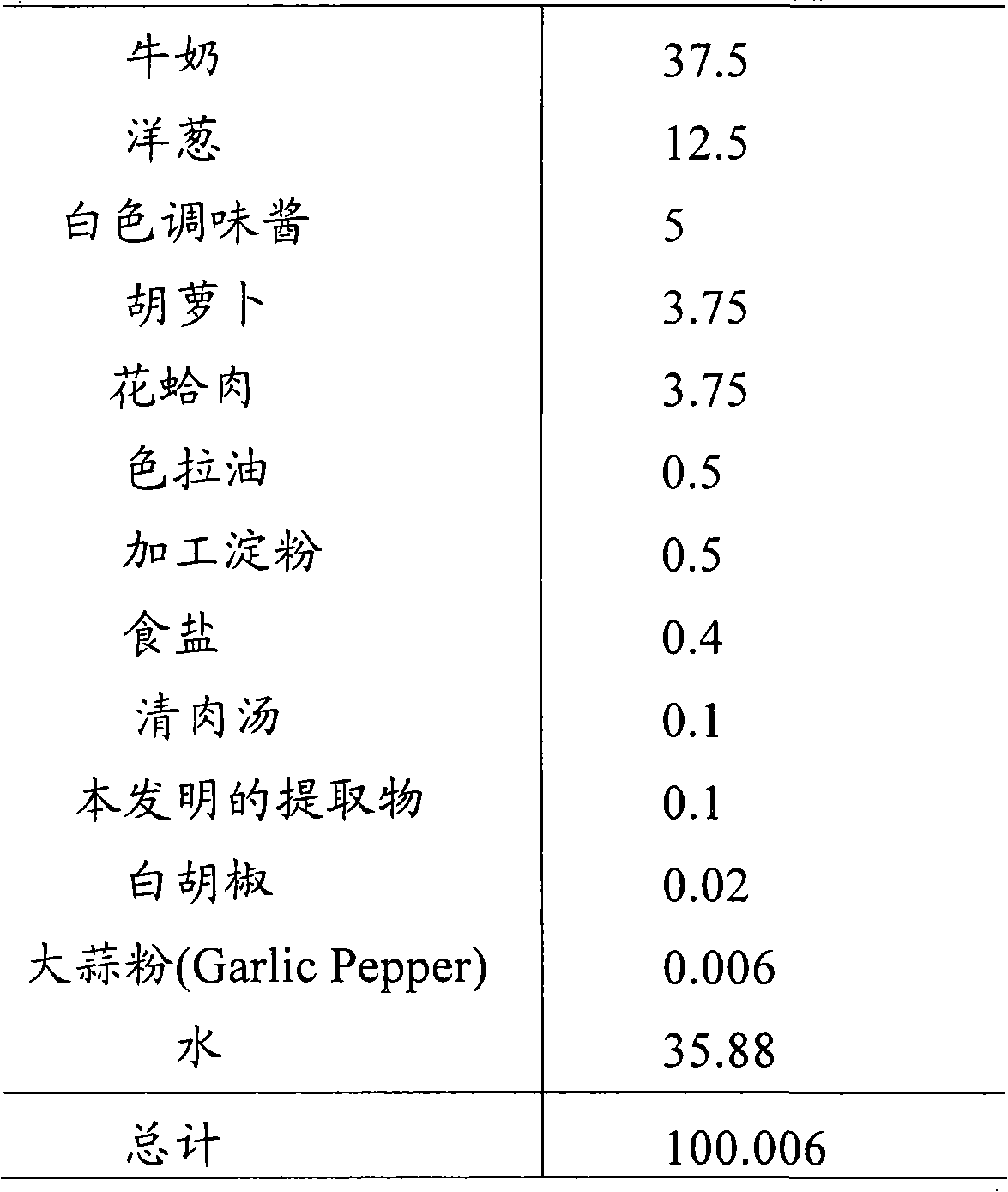Sweet-type seasoning compositions containing high proportion of amino acid and yeast for obtaining the same
A technology of amino acid and composition, applied in the field of yeast extract, can solve the problems such as unmentioned and unmentioned comprehensive sweetness of proline, and achieve the effect of long aftertaste
- Summary
- Abstract
- Description
- Claims
- Application Information
AI Technical Summary
Problems solved by technology
Method used
Image
Examples
Embodiment approach
[0079] [Other embodiments, uses, etc.]
[0080] The yeast extract and seasoning composition of the present invention (hereinafter, referred to as the yeast extract of the present invention, etc.) may be in the form of liquid, paste, powder, or granule. In addition, other seasonings and additives allowed as food can also be used.
[0081] The yeast extract and the like of the present invention can be added to various foods (including health foods). In addition, in addition to food, it can also be added to pharmaceuticals, cosmetics, pet food, etc.
[0082] Since the yeast extract and the like of the present invention have the same sweetness as animal protein breakdown products, they can be used as substitutes for foods suitable for animal protein breakdown products.
[0083] The yeast extract of the present invention and the like can be used in cooking meat, fish, and vegetables. Examples of specific foods include white sauce, meat sauce, demiglace sauce, tomato Sauces, curry,...
Embodiment 1
[0091] Bread-making yeast JT-1 strain from Japan Tobacco Sangyo Co., Ltd. was cultured in YPD medium (bacterial yeast extract (DIFCO) 1.0%, bacto-peptone (DIFCO) 2.0%, glucose 2.0%) to the logarithmic growth phase , suspended in 0.067M sodium phosphate solution, and irradiated with ultraviolet light for 2 minutes while stirring. Then, use the minimal medium (yeast nitrogen base w / o amino acid (DIFCO company) 0.67%, glucose 2.0%, agar 2.0%) containing 10mg / ml AZC (Sigma company) at 32 ℃ After culturing for 5 days, 147 AZC-resistant strains were obtained. After these bacterial colonies were cultured with 50ml of YPD medium for 24 hours, the bacteria were collected by centrifugation, freeze-dried, extracted with hot water at 95°C for 20 minutes, and preserved with an amino acid analyzer (Hitachi L-8900). Analysis of amino acid and glycine. Among the candidate strains, the strain JT-YE-P-52 with high content of proline and glycine was obtained.
Embodiment 2
[0093] The JT-YE-P-52 strain was cultured by shaking with 10 500ml Erlenmeyer flasks with baffles containing 200ml of YPD medium for 24 hours, and centrifuged at 500rpm for 10 minutes to obtain 48.1g of wet thalline. 70 ml of water was added thereto, and the extract was extracted while stirring at 95° C. for 20 minutes. After the extraction, centrifugation was performed at 5000 rpm for 10 minutes to separate the extraction residue to obtain 76 g of a yeast extract (yeast extract B). The free amino acid content in the solid content of the extract was measured, and the results are shown in Table 1. For comparison, the amino acid composition of the control extract (yeast extract A) when the JT-1 strain before mutation was extracted is shown. Compared with before the mutation, the amount of alanine remained unchanged, and the amount of glycine and proline increased. In addition, the ratio of the bitter amino acids leucine, isoleucine, and arginine is approximately halved.
[00...
PUM
 Login to View More
Login to View More Abstract
Description
Claims
Application Information
 Login to View More
Login to View More - R&D
- Intellectual Property
- Life Sciences
- Materials
- Tech Scout
- Unparalleled Data Quality
- Higher Quality Content
- 60% Fewer Hallucinations
Browse by: Latest US Patents, China's latest patents, Technical Efficacy Thesaurus, Application Domain, Technology Topic, Popular Technical Reports.
© 2025 PatSnap. All rights reserved.Legal|Privacy policy|Modern Slavery Act Transparency Statement|Sitemap|About US| Contact US: help@patsnap.com



